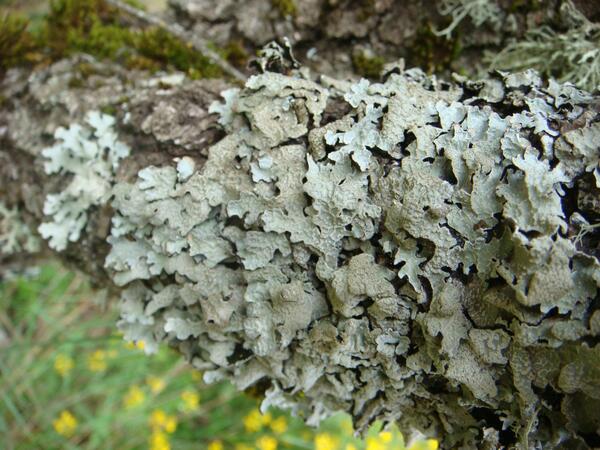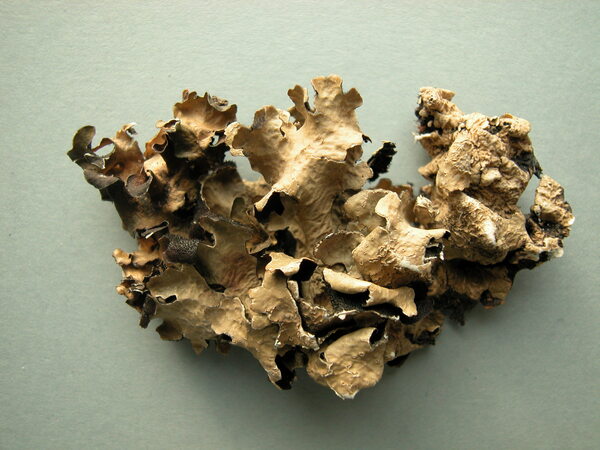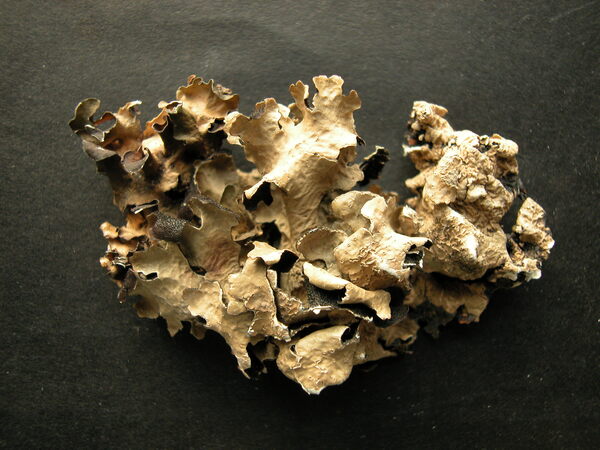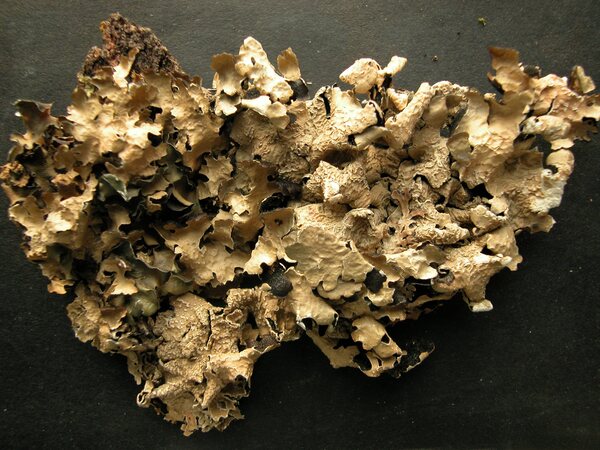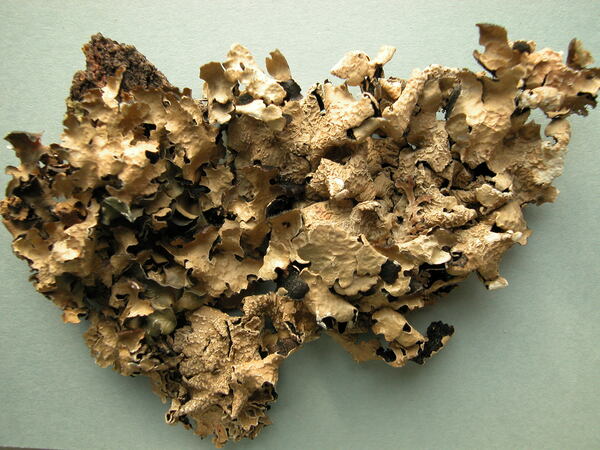Parmelia barrenoae Divakar, M.C. Molina & A. Crespo
Lichenologist, 37: 43, 2005.
Synonyms:
Distribution: N - VA (Ossowska & al. 2021). C - Mol (Ravera 2012, Ravera & Genovesi 2012, Genovesi & Ravera 2014). S - Cal (Ravera & al. 2018b).
Description: Thallus foliose, heteromerous, dorsiventral, adnate to loosely adnate, forming 5-10 cm wide, regular rosettes. Lobes contiguous to overlapping and imbricate, apically rounded to sublinear, short, (2-)3-7 mm wide, the older ones becoming revolute. Upper surface glaucous grey to whitish grey, finely foveolate, becoming reticulately cracked, with numerous laminal and marginal, linear to irregularly elongate, white pseudocyphellae that often form a network in marginal parts. Soralia linear, mainly laminal, developing from cracks in the cortex and soon releasing the granular soredia, leaving the pale medulla exposed at the bottom of the crack, thus appearing eroded and with a prominent, reflexed cortical margin. Lower surface black, with moderately abundant, simple to furcate (never squarrose), 1-2 mm long rhizines. Upper cortex paraplectenchymatous, of 2-6 layers of densely packed cells, with a usually non-pored epicortex, the cell walls with isolichenan; medulla white; algal layer continuous; lower cortex paraplectenchymatous, thinner than upper cortex. Apothecia and pycnidia not known. Photobiont chlorococcoid. Spot tests: upper cortex K+ yellow (but often slowly turning dirty red due to medullary substances), C-, KC-, P- or P+ faintly yellow; medulla K+ yellow turning dirty red, C-, KC-, P+ orange-red. Chemistry: upper cortex with atranorin; medulla with salazinic acid.Note: mostly epiphytic, more rarely on siliceous rocks; the distribution in Italy is very poorly known because it was almost never distinguished from P. sulcata.
Growth form: Foliose, broad lobed
Substrata: bark
Photobiont: green algae other than Trentepohlia
Reproductive strategy: mainly asexual, by soredia, or soredia-like structures (e.g. blastidia)
Commonnes-rarity: (info)
Alpine belt: absent
Subalpine belt: very rare
Oromediterranean belt: absent
Montane belt: rare
Submediterranean belt: rare
Padanian area: absent
Humid submediterranean belt: rare
Humid mediterranean belt: absent
Dry mediterranean belt: absent
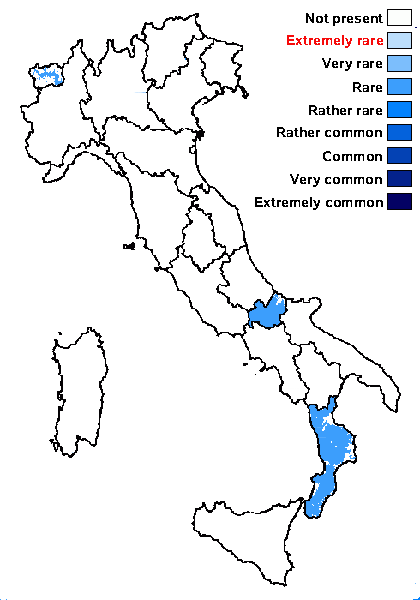
Predictive model
Herbarium samples
Growth form: Foliose, broad lobed
Substrata: bark
Photobiont: green algae other than Trentepohlia
Reproductive strategy: mainly asexual, by soredia, or soredia-like structures (e.g. blastidia)
Commonnes-rarity: (info)
Alpine belt: absent
Subalpine belt: very rare
Oromediterranean belt: absent
Montane belt: rare
Submediterranean belt: rare
Padanian area: absent
Humid submediterranean belt: rare
Humid mediterranean belt: absent
Dry mediterranean belt: absent

Predictive model
| Herbarium samples |
 INDEX FUNGORUM
INDEX FUNGORUM
 GBIF
GBIF
